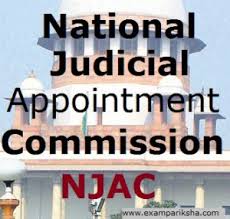Over the years the method of appointment of judges to the Supreme and High Courts has undergone changes and modifications with respect to the circumstances and the needs of the time. The Indian constitution originally allows the President to appoint judges after “consultation with the Chief Justice of India and any other Supreme Court and High Court judges that the President may deem necessary” .
It was in 1970s under the unwarranted super cessions and punitive transfers of judges by the Indra Gandhi government that the need for an autonomous system for judicial appointments was realized. As a result in 1993 Supreme Court Advocates-on-Record Association Vs Union of India in order to eliminate political influence set up the collegium system which gave the power back to the Chief Justice in decisions of appointment of new judges in consultation with senior judges of the Supreme and High Courts. In its existence, the collegium system started to be seen as a closed door process where appointments were being made on basis other than merit and this called for a change in the procedure for appointments of judges of the superior courts of the country. As a result a new commission found its birth.
Two new bills have been passed by the Indian legislature which seeks to modify the method in which Supreme Court and high court judges are appointed. These two bills the National Judicial Appointments Commission Act, 2014 and the 121st Constitutional Amendment provide for the setting up of the National Judicial Appointments Commission and empowers it to recommend names for appointment of judges to the Supreme and High Courts to the President of India. These bills became laws when they gained the assent of the President of India on 31st December,2014.
The new body set up for judicial appointments comprises of the Chief Justice of India (ex –officio Chairman) ,two senior most judges of the Supreme Court ,the Law minister and two eminent persons one of whom must belong to the category of Scheduled Castes, Scheduled Tribes, Other Backward Classes, minorities or women who are to be decided by a committee comprising of the Chief Justice of India, the Prime Minister and the leader of the opposition party in the lower house of the parliament. This composition indicates towards the inclusion of the executive in the selection process with the law minister and the two eminent persons ,the fields of their eminence still undefined becoming an integral part of the process.
The NJAC takes away the powers from the Chief Justice in the selection process as he does not have a casting vote in case of a tie and neither can the Chief Justice exercise his veto over the decisions of the commission. The veto in the commission can only be exercised when two members of the commission raise a claim against a decision. Also the mention of two eminent persons, one of whom needs to be from a defined background brings in reservation to the selection of the topmost posts in the country, a concern that has already been a great point for conflict with its existence in the educational and political arena.
The NJAC has been proposed as a method for making accountable and inclusive judicial appointments and also as an alternative to the collegium system which lacked transparency, providing for its inadequacies. However, with unjustified executive control, the Chief Justice only as a nominal head, unambiguity over the question of two eminent persons and two separate bills for one law, this commission raises concerns about political interference into judicial appointments disguised as legal procedure.




10 Comments. Leave new
Good efforts, great work with the details.
informative ….. very nice 🙂
Informative
Informative
Informative article.. well done!!
Informative article..!
Well done!
Good efforts 😀
Great work
Well written